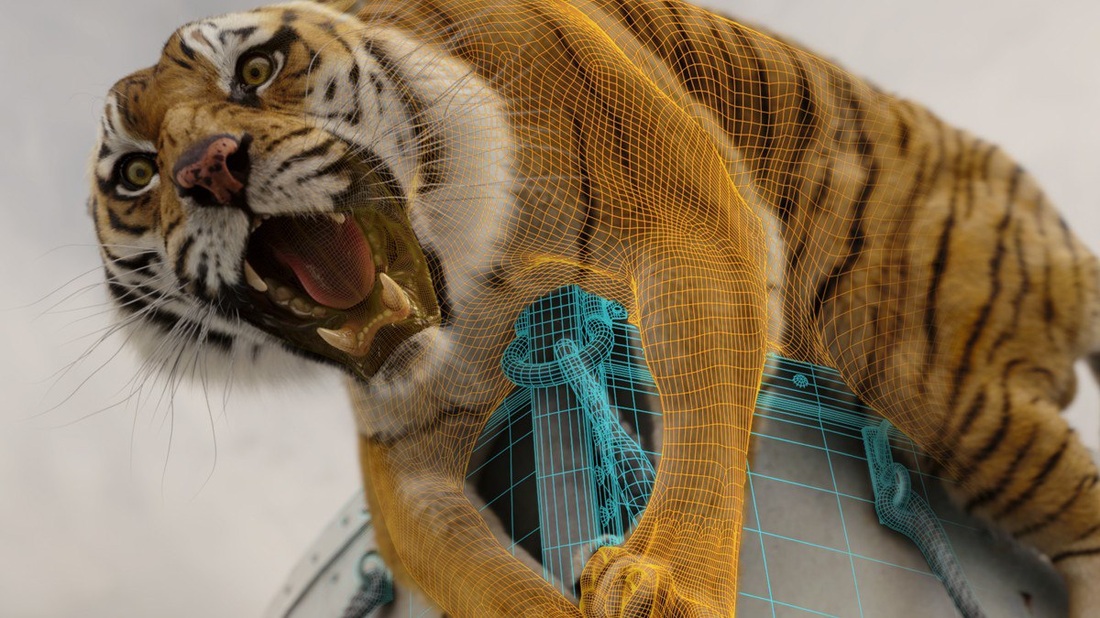Since Life of Pi, Rhythm and Hues was repurchased and has continued to work on films including Django Unchained (Quentin Tarantino, 2012), The Secret Life of Walter Mitty (Ben Stiller, 2013), and X-Men: Days of Future Past (Bryan Singer, 2014). Numerous VFX studios have gone bankrupt since 2003, and the industry struggles, but hopefully we can fix the post-production process in the future so that these highly artistic and influential companies can thrive in a market where their skills are in high demand.
|
by Kyle Kull With the digital brand of filmmaking in full force, visual effects (VFX) companies have started to transition from small, contracted groups to large corporations that work on a significant portion of a film, rather than simply a single shot or scene. However with the constant need for productions to cut their budgets to make ends meet, the VFX companies are eventually those that suffer. As a production begins to reach the final stages in its creation by entering the editing process, the studios reach the boundaries of their budgets and as a result, they cut funding to the VFX companies they have hired. Additionally, the process to hire these VFX groups has remained relatively unchanged since the film industry has entered into the digital age. VFX companies are hired for a price at the beginning of a production, and then prescribed to do as the producers and directors ask. As a result, unexpected costs and demands are then implemented on these VFX companies, making their jobs more difficult and unexpectedly costly. Unfortunately, this has caused major issues that have not only impacted the VFX industry, but the entirety of the film community. Rhythm and Hues is a VFX company that has had incredible success throughout its 27 year existence, winning 3 Oscars for Best VFX. In 1995 the film Babe (Chris Noonan) received critical acclaim for its ability to use a lifelike pig as a main character for the entire film. After winning its first Oscar for its work with Babe, Rhythm and Hues received positive critique for many of their productions, but did not win another Oscar until the completion of The Golden Compass (Chris Weitz, 2007). Their work on this film mainly consisted of creating the story's "daemons", or animal companions in the world of the story, winning their second Academy Award for Visual Effects. The company relatively flourished, and was again commended for Life of Pi (Ang Lee, 2012). However, the smooth sailing for the successful VFX group was about to end. When Life of Pi was released in 2012, it was obvious to the viewers that the visual effects were incredible and visually stunning. The main character, known as "Pi", is stuck on a boat at sea with an assortment of zoo animals, including a massive Bengali tiger. All of these animals depicted in the film are shown with stunning visuals, looking as if they were truly in each shot with the character. It was for this that the Academy decided to award Rhythm and Hues for the third time, recognizing their work with Ang Lee on Life of Pi. However, due to problems with the business structure of their company, Rhythm and Hues shortly after the release of Life of Pi was forced to declare bankruptcy and laid off over 200 of their employees. Many of the members of Rhythm and Hues were excited for Life of Pi, believing that this was the project the company had been working for since its creation. While they worked on a variety of special effects, the company specialized in the creation of CGI animals, working on Babe the pig in Babe, the animals in The Golden Compass and the lion Aslan from The Chronicles of Narnia films. Rhythm and Hues saw their work with Ang Lee as the next step in their business, because they were given the opportunity to work on a high quality art film with critical acclaim, rather than on visually beautiful, somewhat shallow blockbusters. Therefore, when a large amount of employees were fired due to lack of money, these former employees were outraged. At the 2013 Academy Awards, the fired employees from Rhythm and Hues protested the Oscars, saying that they were forced to complete a project that made their company become bankrupt. The Academy did not address the protesters, and did not believe they had a right to their claims. The general public was not truly aware of the events that had occurred with Rhythm and Hues and Life of Pi, so the Academy was able to avoid mentioning or speaking of the protesting that was occurring. However, eventually Rhythm and Hues was awarded their Oscar, and Bill Westenhofer, visual effects supervisor from the company, went to accept the award. During his speech, he attempted to talk about the financial issues that the VFX industry was facing and problems that had arisen, but the Academy cut off his microphone. Additionally, Ang Lee failed to thank anyone from the visual effects portion of his film, despite thanking almost every other collaborator. This eventually launched a social media campaign that involved people posting simply a picture of the green key light, trying to raise awareness for the struggling VFX industry. While a great deal of this story is political and somewhat controversial, it did effectively begin to raise awareness for an issue that before was unknown to most people in the industry. As the market for visual effects grows and the film industry continues to become more digitally active, it is important that the business models for VFX companies continue to remain updated and budgeted fairly. While sometimes it may seem like filmmaking is a profiting and successful market, there are always financial and economical issues, as there are with any market. Below is a documentary consisting of the interviews with current and former employees of Rhythm and Hues talking about their experience with the entire episode. Since Life of Pi, Rhythm and Hues was repurchased and has continued to work on films including Django Unchained (Quentin Tarantino, 2012), The Secret Life of Walter Mitty (Ben Stiller, 2013), and X-Men: Days of Future Past (Bryan Singer, 2014). Numerous VFX studios have gone bankrupt since 2003, and the industry struggles, but hopefully we can fix the post-production process in the future so that these highly artistic and influential companies can thrive in a market where their skills are in high demand. Comments are closed.
|
Archives
April 2024
|




 RSS Feed
RSS Feed
